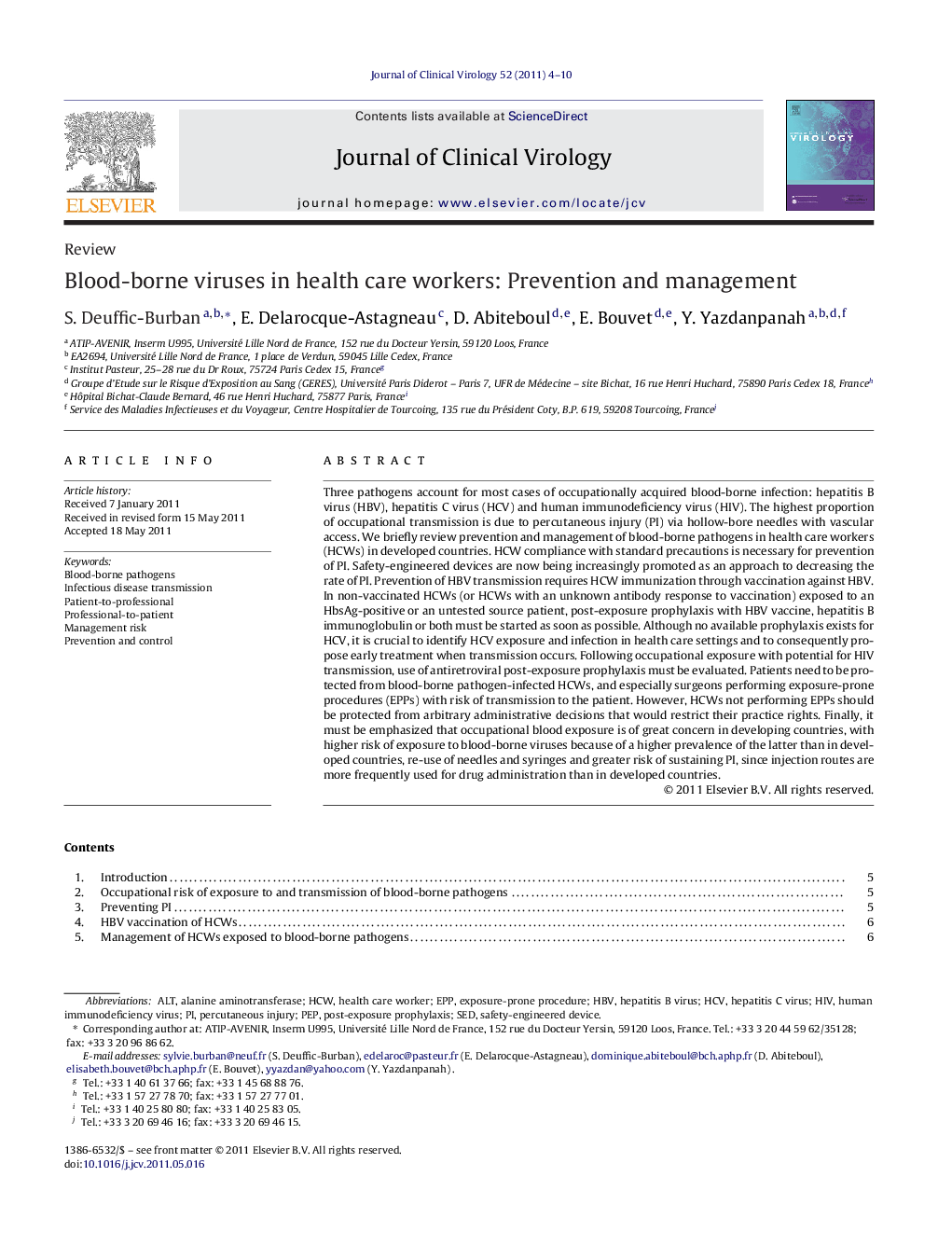| کد مقاله | کد نشریه | سال انتشار | مقاله انگلیسی | نسخه تمام متن |
|---|---|---|---|---|
| 3369587 | 1219042 | 2011 | 7 صفحه PDF | دانلود رایگان |

Three pathogens account for most cases of occupationally acquired blood-borne infection: hepatitis B virus (HBV), hepatitis C virus (HCV) and human immunodeficiency virus (HIV). The highest proportion of occupational transmission is due to percutaneous injury (PI) via hollow-bore needles with vascular access. We briefly review prevention and management of blood-borne pathogens in health care workers (HCWs) in developed countries. HCW compliance with standard precautions is necessary for prevention of PI. Safety-engineered devices are now being increasingly promoted as an approach to decreasing the rate of PI. Prevention of HBV transmission requires HCW immunization through vaccination against HBV. In non-vaccinated HCWs (or HCWs with an unknown antibody response to vaccination) exposed to an HbsAg-positive or an untested source patient, post-exposure prophylaxis with HBV vaccine, hepatitis B immunoglobulin or both must be started as soon as possible. Although no available prophylaxis exists for HCV, it is crucial to identify HCV exposure and infection in health care settings and to consequently propose early treatment when transmission occurs. Following occupational exposure with potential for HIV transmission, use of antiretroviral post-exposure prophylaxis must be evaluated. Patients need to be protected from blood-borne pathogen-infected HCWs, and especially surgeons performing exposure-prone procedures (EPPs) with risk of transmission to the patient. However, HCWs not performing EPPs should be protected from arbitrary administrative decisions that would restrict their practice rights. Finally, it must be emphasized that occupational blood exposure is of great concern in developing countries, with higher risk of exposure to blood-borne viruses because of a higher prevalence of the latter than in developed countries, re-use of needles and syringes and greater risk of sustaining PI, since injection routes are more frequently used for drug administration than in developed countries.
Journal: Journal of Clinical Virology - Volume 52, Issue 1, September 2011, Pages 4–10